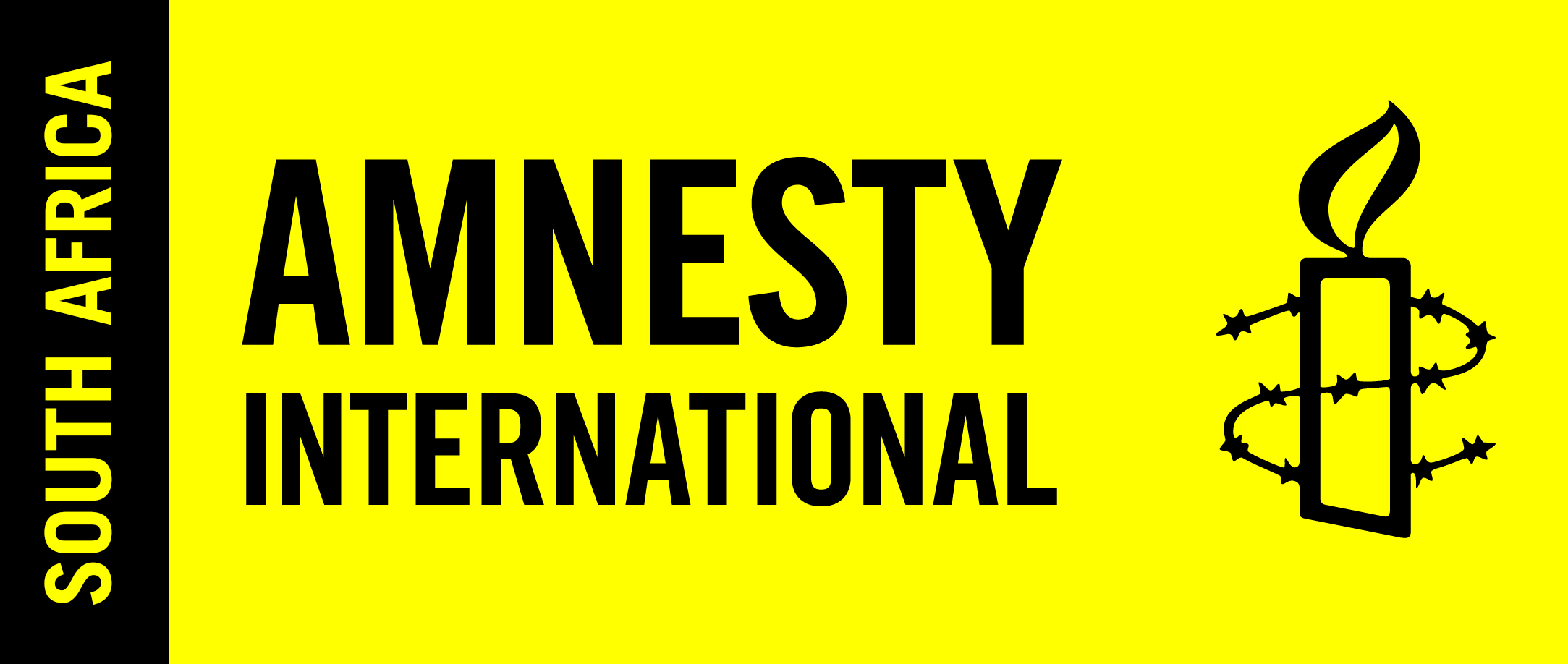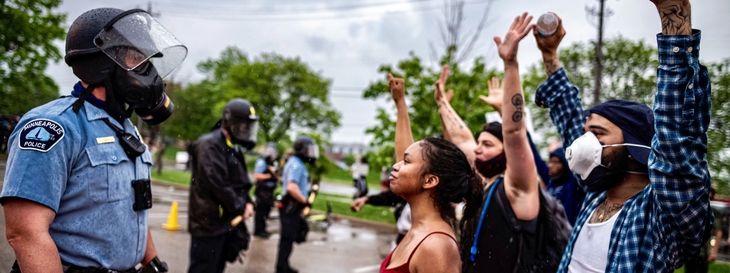* Police misuse of rubber bullets and other less lethal weapons against peaceful protesters is increasingly routine, leading to more injuries and deaths, a new report shows
* Increasing availability of rubber bullets and other less lethal weapons has led to a rise in the use of force against protesters, resulting in a huge increase in permanent injuries
* A global Torture-Free Trade Treaty is urgently needed to regulate the trade in policing equipment, and to help protect the right to protest
Security forces across the world are routinely misusing rubber and plastic bullets and other law enforcement weapons to violently suppress peaceful protests and cause horrific injuries and deaths, said Amnesty International today, in a new report calling for strict controls on their use and a global treaty to regulate their trade.
The report, My Eye Exploded, published jointly with the Omega Research Foundation, is based on research in more than 30 countries over the last five years. It documents how thousands of protesters and bystanders have been maimed and dozens killed by the often reckless and disproportionate use of less lethal law enforcement weaponry, including kinetic impact projectiles (KIPs), such as rubber bullets, as well as the firing of rubberized buckshot, and tear gas grenades aimed and fired directly at demonstrators.
“We believe that legally-binding global controls on the manufacture and trade in less lethal weapons, including KIPs, along with effective guidelines on the use of force are urgently needed to combat an escalating cycle of abuses,” said Patrick Wilcken, Amnesty International’s Researcher on Military, Security and Policing issues.
Amnesty International and the Omega Research Foundation are among 30 organizations calling for a UN-backed Torture-Free Trade Treaty to prohibit the manufacture and trade of inherently abusive KIPs and other law enforcement weapons, and to introduce human rights-based trade controls on the supply of other law enforcement equipment, including rubber and plastic bullets.
“A Torture-Free Trade Treaty would prohibit all production and trade in existing inherently abusive law enforcement weapons and equipment, including intrinsically dangerous or inaccurate single KIPs, rubber-coated metal bullets, rubberized buckshot and ammunition with multiple projectiles that have resulted in blinding, other serious injuries and deaths across the world,” said Dr Michael Crowley, Research Associate at the Omega Research Foundation.
Misuse of less lethal weapons is causing devastating injuries worldwide
The weapons have led to permanent disability in hundreds of cases and many deaths. There has been an alarming increase in eye injuries, including eyeball ruptures, retinal detachments and the complete loss of sight, as well as bone and skull fractures, brain injuries, the rupture of internal organs and haemorrhaging, punctured hearts and lungs from broken ribs, damage to genitalia, and psychological trauma.
According to an evaluation by Chile’s National Institute for Human Rights, police actions during protests which began in October 2019 resulted in more than 440 eye injuries, with over 30 cases of eye loss, or ocular rupture. At least 53 people died from projectiles fired by security forces, according to a peer-reviewed study based on medical literature between 1990 and June 2017. It also concluded that 300 of the 1,984 people injured suffered permanent disability. The actual numbers are likely to be far higher.
Since then, the availability, variety and deployment of KIPs has escalated globally, furthering the militarization of protest policing. The report finds that national guidance on the use of KIPs rarely meets international standards on the use of force, which states that their deployment be limited to situations of last resort when violent individuals pose an imminent threat of harm to persons. Police forces routinely flout regulations with impunity.
History and South Africa’s legal framework
In the last five years, Amnesty International has documented the unlawful, often punitive, use of kinetic impact projectiles in all regions, including in Angola, Bangladesh, Belarus, Bolivia, Cameroon, Chile, Colombia, Curaçao, Egypt, Eswatini, France, Georgia, Greece, Haiti, Hong Kong, Iran, Iraq, Israel/OPT, Kyrgyzstan, Lebanon, Morocco, Myanmar, Puerto Rico, South Africa, Spain, Sudan, Thailand, Togo, Tunisia, Uganda, the USA, Uzbekistan and Venezuela. These cases include police firing projectiles at short range and at head height; firing randomly into crowds of peaceful protesters; firing at fleeing protesters; and one case of firing into a crowd from a military helicopter.
Less lethal kinetic impact projectiles (KIPs) were originally developed by the UK and US military. Early use was in Hong Kong in the late 1950s by UK military forces who deployed “skip-fired” (i.e., rebounded off the ground) “wooden bullets” made of teak against protesters, as direct fire of these projectiles was deemed too dangerous. The 1970s saw the use of rubber bullets, and later plastic models, developed by the UK Ministry of Defence for use by the British Army in Northern Ireland. These projectiles were highly inaccurate and dangerous, causing severe injuries in some instances, including the blinding of a 10-year-old boy, and up to 17 deaths, eight of whom were children. Plastic bullets were also used to quell unrest in apartheid South Africa in the 1980s, leading to facial fractures and eye damage, among other injuries.
South Africa’s National Instruction 4 of 2014 Public Order Police: crowd management during public gatherings and demonstrations prohibits the use of “birdshot (fine lead pellets) and buckshot (small lead pellets)” but allows the use of approved rubber rounds on command “as offensive measures to disperse a crowd in extreme circumstances, if less forceful methods have proven ineffective.”
South Africa’s Correctional Services Act, 1998 Section 34 allows use by trained correctional officials “during emergency situations”. It does not specify a minimum safe distance and appears to suggest that there are no restrictions on targeting individuals further than 30 metres away.
Use by Israeli Defense Forces
Rubber-coated metal bullets used by the Israeli Defense Forces (IDF) in the Occupied Palestinian Territories (OPT) are rigid, heavy and are fired at high velocity, leading to penetrative injuries. According to the UN Human Rights Guidance on Less-Lethal Weapons in Law Enforcement, rubber-coated metal bullets “are particularly dangerous and should not be used”; the UNODC also cautions against use due to their “high risk of lethality.” Indeed they should not be considered as less lethal weapons – they are lethal weapons which have led to scores of deaths. Their use has been banned for crowd control within Israel, but continues to be used in the OPT.
According to the Association of Civil Rights in Israel (ACRI), 35 Palestinians were injured by the black sponge KIPs between July 2014 and the end of 2016. Sixteen of them were minors and 28 of the victims, including 12 minors, were hit in the head. Seventeen lost their sight in one or both eyes. Among the injuries sustained by the others were shattered jaws and teeth, multiple facial bone and skull fractures, brain haemorrhaging and irreversible brain damage. Local NGO B’Tselem has also documented the grave impact of a range of KIPs on Palestinian protesters and bystanders over many years. Recent cases include the death of a 10-year-old after being hit in the chest by a black sponge KIP on 19 July 2016; and the fracture and bruising of a 16-year-old’s skull on 6 January 2019 after an Israel Border Police officer fired a sponge KIP without any warning.
Use in other countries
In April 2021, Leidy Cadena Torres, then 22, was walking to a protest over tax reforms in the Colombian capital Bogota, when she was hit in the face by a rubber bullet fired from close range by a riot police officer. She lost an eye.
“I didn’t understand what was happening so I took out my phone and took a picture of myself, but I couldn’t see it,” she told Amnesty International.
“They try to injure you in a visible way, such as losing an eye, in order to scare people, so they don’t go out [and protest].”
Leidy Cadena Torres’s experience of being blinded has been repeated with alarming regularity in similar circumstances in south and central American states, Europe, the Middle East, Africa, and the USA during recent and current protests.
Gustavo Gatica, a 22-year-old psychology student, was blinded in both eyes after being hit in the face by rubber-coated metal pellets fired by police during inequality protests in Chile’s capital Santiago on 8 November 2019. To date there has been no accountability.
He recently told Amnesty International: “I felt the water running from my eyes … but it was blood.” He hopes his injuries will inspire change, to stop this happening to others, saying: “I gave my eyes so people would wake up.”
In the USA the use of rubber bullets to suppress peaceful protest has become increasingly commonplace.
One demonstrator hit in the face in Minneapolis, Minnesota on 31 May 2020 told Amnesty International: “My eye exploded from the impact of the rubber bullet and my nose moved from where it should be to below the other eye. The first night I was in the hospital they gathered up the pieces of my eye and sewed it back together. Then they moved my nose back to where it should be and reshaped it. They put in a prosthetic eye – so I can only see out of my right eye now.”
In Spain, the use of large, inherently inaccurate tennis-ball-sized rubber KIPs has led to at last one death from head trauma and 24 serious injuries, including 11 cases of severe eye injury, according to Stop Balas de Goma, a campaign group. In France, a medical review of 21 patients with face and eye injuries caused by rubber bullets noted severe injuries including bone fragmentation, fractures and ruptures resulting in blindness.
Amnesty International has also documented cases of tear gas grenades being aimed and fired directly at individuals or crowds in Chile, Colombia, Ecuador, France, Gaza, Guinea, Hong Kong, Iran, Iraq, Peru, Sudan, Tunisia and Venezuela.
In Iraq, security forces deliberately targeted protesters with specialist grenades which are 10 times heavier than typical tear gas munitions, causing horrific injuries and at least two dozen deaths in 2019. In Tunisia, Haykal Rachdi, 21, died after he was hit in the head by a tear gas cannister in January 2021.
In Colombia security forces have deployed VENOM, a 30-tube grenade launcher, originally developed for the US Marine Corps, to launch volleys of tear gas grenades at protesters.
For more information or to request an interview, please contact:
Amnesty International’s Global Press Office on press@amnesty.org.


